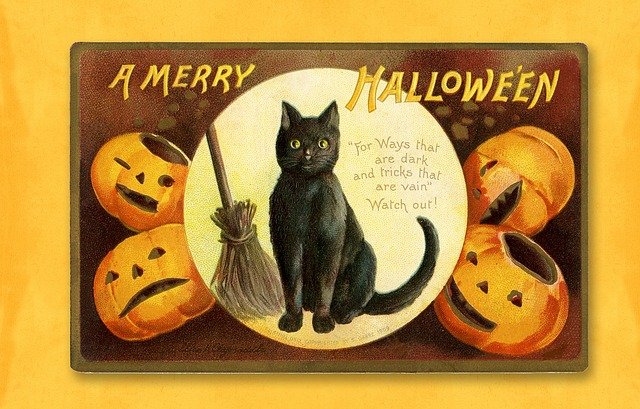It’s twilight and the brisk autumn air is filled with the fragrance of waning leaves and bonfires. Off in the distance, lantern-light is seen dancing in the darkness. People have gathered to celebrate the end of the harvest and to honor the dead. Guided by the light glowing from within carved turnips, they leave apples and other scraps of food for spirits who are on a great journey between worlds. It’s the fête, or celebration, of Samhain night in a long-forgotten Celtic land. Three-thousand years later, it’s twilight and the brisk autumn air is filled with the fragrance of leaves and fires. Off in the distance, lights can be seen dancing in the darkness. Children and adults frolic from house to house begging for treats and are guided by the light glowing from within carved pumpkins. People gather in churches to mark a day for honoring the dead and Halloween celebrating as we know it is afoot.
In the three millennia that have past since the Celts and their Druid priests and priestess first danced the “dance of life in the darkness,” Halloween has become a commercial enterprise rivaling Christmas in its commercialism. It has evolved from a simple festival celebrating life and death in the countryside to a $2 billion a year marketing extravaganza. At its root, however, lie the same basic principles that have endured and reincarnated themselves over the centuries.
Halloween originates as a pagan custom and ritual in the Celtic regions of Ireland and Britain. It marked the end of the growing year and the beginning of winter. At this great crossroads, it was believed that the veil between the living world and the other world, the Celtic afterlife, was at its thinnest and spirits could freely roam between the two. It was customary at this time to dress in animal skins and otherworldly accoutrement to blend in with the roaming spirits. Rituals of dancing by the light of a bonfire to celebrate life and death and to leave food for returning loved ones were the custom of the day. Divination was also a common practice and thought to be at its most powerful during this special time that was a gateway between times and worlds.
 After more than a thousand years of spreading from Celtic tribes to other peoples, Samhain became permanently ingrained into mainstream cultural beliefs and customs. Much to the chagrin of the up and coming Christian movement, Samhain rituals involving communion with dead, were as popular as ever. Unable to abolish the ancient pagan customs, the church decided to adopt the concept, giving birth to All Hallow’s Eve, the evening of the hallowed or holy, to honor dead saints. Still, the old ways were too deeply rooted and continued to prosper. All Hallow’s Eve eventually became commonly known as Halloween and the church continued its commemoration of saints on All Saints Day. Later, All Souls Day was added to honor all of the dead.
After more than a thousand years of spreading from Celtic tribes to other peoples, Samhain became permanently ingrained into mainstream cultural beliefs and customs. Much to the chagrin of the up and coming Christian movement, Samhain rituals involving communion with dead, were as popular as ever. Unable to abolish the ancient pagan customs, the church decided to adopt the concept, giving birth to All Hallow’s Eve, the evening of the hallowed or holy, to honor dead saints. Still, the old ways were too deeply rooted and continued to prosper. All Hallow’s Eve eventually became commonly known as Halloween and the church continued its commemoration of saints on All Saints Day. Later, All Souls Day was added to honor all of the dead.
When Irish immigrants came to America, they brought with them many of the ancient customs that stood the test of time and suppression by the church. The custom of carving turnips to create a beacon of light to guide the spirits of the dead on their journey was one such practice. Once here, they found that the native squash, in particular pumpkins, was much softer and easier to carve than turnips. Their customs, being reborn in the new world, led to Jack-o’-Lanterns and pumpkins being forever associated with Halloween.



